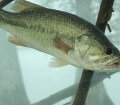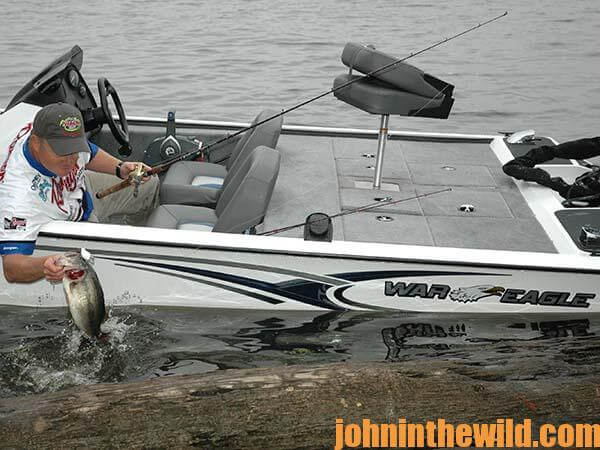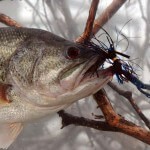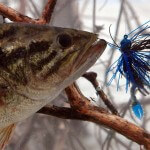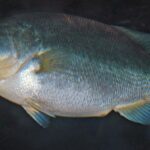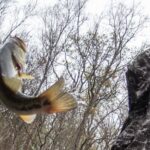John’s Note: At this writing, Mark Rose of Marion, Arkansas, is preparing to fish the FLW Tournament www.flwoutdoors.com on the Red River the last half of July, 2013. The weather will be extremely hot, and the fishing pressure, during the tournament, will be extremely high. Under these conditions, catching any bass can be very difficult, but Rose is a veteran tournament bass fisherman with secret tactics he believes will give him the best chance to win the $125,000 prize. Let’s look into the mind of Rose, as he prepares to try and earn in 3 days what most of us won’t earn in 2 years.
In the hot summer months, the water won’t have much oxygen in it, and the water will be fairly warm.
So, bass are looking for places where they can find highly-oxygenated water and shade. Two types of spots produce oxygen and shade grass and current with structure that breaks the current or that provides cover to produce shade for the bass. In the backwater, we usually find some kind of grass, lily pads or water weeds that not only provide shade and oxygen for the bass but also cover where baitfish, bluegills and shad can hide. The grass also provides good ambush cover for the bass. When the Good Lord made lakes and rivers, he put grass in them to produce oxygen for the baitfish and the prey fish. One of my favorite sayings is, “Anytime you have weeds, you have what you need for bass.” I use three different tactics to fish grass in the hot summertime.
Cut the Grass With a Cut-R Tail:
Strike King Lure Company www.strikeking.com has produced a new swimming worm called the Cut-R Tail. I swim the Cut-R Tail over the top of the grass. On cloudy days, I like to fish black-and-blue or Junebug color Cut-R Tails. If the sun is out, I like to fish watermelon or green-pumpkin Cut-R Tail worms. If I am fishing on a clear day, I will use 17- or 20-pound test fluorocarbon line. If the water has some stain to it, I prefer to cast braded line. I don’t try and give the worm any action. I just use a steady retrieve, because the worm has plenty of action in its tail. I hold my rod tip high. When the worm comes to an opening in the weeds, I drop my rod tip and let the worm fall. The fish will tell you how fast to reel the worm. If the bass are blowing-up through the weeds to take the worm, I will speed-up my retrieve. If the bass are reluctant to bite, I’ll make a long cast and reel the worm a little slower.
Frog Em:
When I am fishing frogs, I like a Kistler 7-foot heavy-action rod. If I am making long casts, and the bass are hitting the frog, I will move up to a 7-foot 3-inch or a 7-foot 6-inch Kistler heavy-action rod. I will be fishing the Lew’s 7:1 tournament pro baitcasting reel. I will be using 65-pound test http://seaguar.com/home.htm 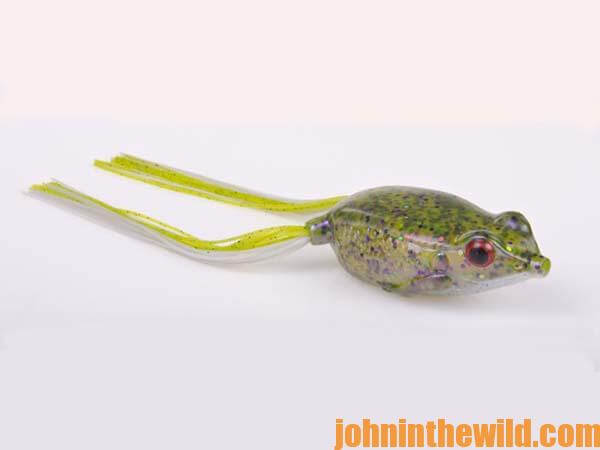 Seaguar smackdown tournament line. When I am fishing the frog, I want that frog to act like a frog. In open water, I will swim it. If I come to a lily pad, I will slow down. I will let the frog crawl up on the lily pad, sit there for a half second, then crawl off the lily pad and start swimming it again. I either use a black-colored frog or a white frog. Lots of people have different techniques for setting the hooks on a bass, when a bass goes up on a frog. I watch the frog, as I am retrieving it back to the boat. Usually, there will be an explosion when the bass attacks the frog. If my frog has vanished after the explosion, I’ll set the hook. If the frog is still on the water, I’ll continue my retrieve.
Seaguar smackdown tournament line. When I am fishing the frog, I want that frog to act like a frog. In open water, I will swim it. If I come to a lily pad, I will slow down. I will let the frog crawl up on the lily pad, sit there for a half second, then crawl off the lily pad and start swimming it again. I either use a black-colored frog or a white frog. Lots of people have different techniques for setting the hooks on a bass, when a bass goes up on a frog. I watch the frog, as I am retrieving it back to the boat. Usually, there will be an explosion when the bass attacks the frog. If my frog has vanished after the explosion, I’ll set the hook. If the frog is still on the water, I’ll continue my retrieve.
The next problem with fishing a frog in the grass is getting the frog and the bass out of the grass. That’s why I like 65-pound-test braded line, set the hook as hard and as fast as I can and just try and work the bass out of the grass. If I am fishing in really-thick grass, I’ll take my needle-nose pliers and bend the hooks to make them sit-down on the frog some and not be lying right on the frog’s back. This process allows the frog to come through that thick grass much better than if you don’t bend the hooks. However, what you give up when you bend those hooks a little bit is that your hook-up rate won’t be as good as it’s been before you’ve bent the hooks.
When I am flipping the grass, my favorite lure is the Strike King Rodent, which doesn’t have a lot of action but does go through the grass really easily. The key to successfully flipping grass is the size of weight you use in front of the Rodent. If the grass is sparse, I use a 1/2-ounce sinker in front of the lure. If the grass is thick, I use a one-ounce sinker in front of the lure. My favorite color is black. I fish the Rodent on 65-pound-test braided line. I’ll flip the Rodent through an open spot in the grass, let it fall to the bottom and shake it once it hits the bottom. If the bass doesn’t take the Rodent immediately, I’ll pull the bait out of the grass and put in in another hole in the grass. Most of the time, as soon as the bait starts to fall in the hole, a bass will bite. I like a heavier weight, as opposed to a lighter weight, because I want that bait to fall though the hole really fast to get a reaction bite.
To learn more about Mark Rose’s bass fishing, get John E. Phillips’ Kindle ebooks, “How to Bass Fish Like a Pro” and “How to Win a Bass Tournament.” “Click here to get these books.”
About the Author
John Phillips, winner of the 2012 Homer Circle Fishing Award for outstanding fishing writer by the American Sportfishing Association (AMA) and the Professional Outdoor Media Association (POMA), the 2008 Crossbow Communicator of the year and the 2007 Legendary Communicator chosen for induction into the National Fresh Water Hall of Fame, is a freelance writer (over 6,000 magazine articles for about 100 magazines and several thousand newspaper columns published), magazine editor, photographer for print media as well as industry catalogues (over 25,000 photos published), lecturer, outdoor consultant, marketing consultant, book author and daily internet content provider with an overview of the outdoors.

